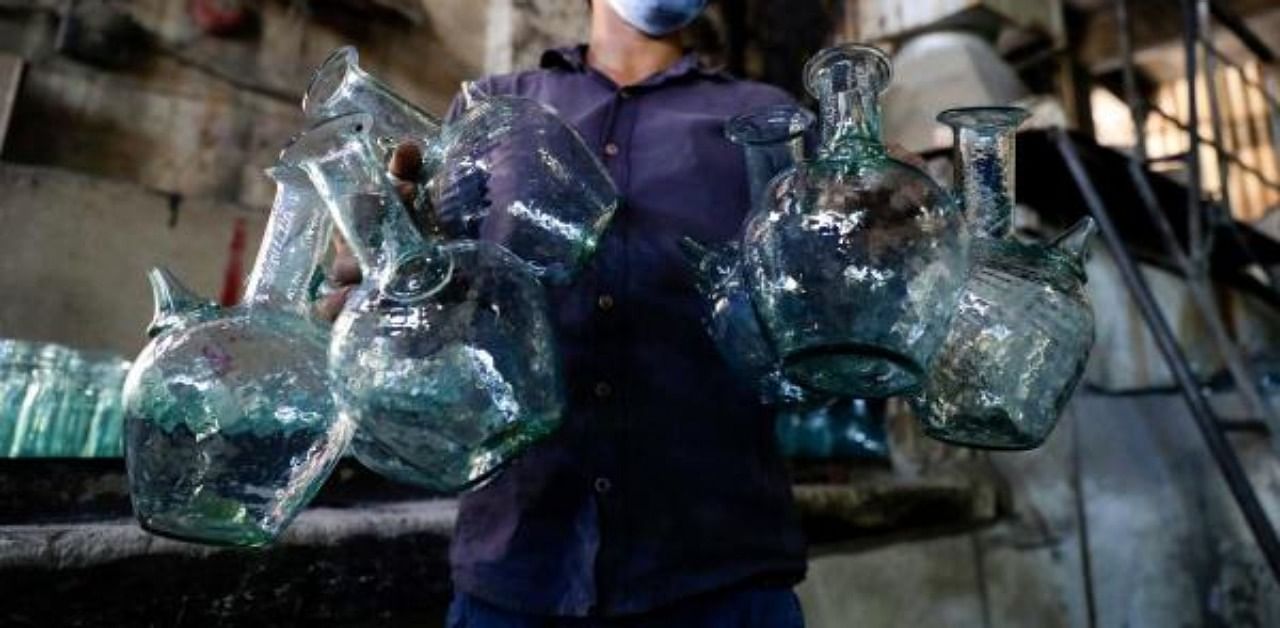
For some industries, the turning of glass into a crystal is bane for which there is no immediate solution because the process of transformation, called “devitrification,” is sheathed in mystery. Now, city scientists have shattered some of the secrets of that transformation.
The scientists, from Jawaharlal Nehru Centre for Advanced Scientific Research (JNCASR) and the Indian Institute of Science (IISc), explained that glass is characterless because its atomic structure does not have the repetitive arrangement seen in crystals.
However, they added that the dynamics of devitrification is poorly understood because the process can be extremely slow, spanning decades or more. The trick was to somehow speed up the process so they could study what was happening.
PhD Divya Ganapathi of IISc said the researchers turned to glass made of colloidal particles.
“Since each colloidal particle can be thought of as a substitute for a single atom, but being ten thousand times bigger than the atom, its dynamics can be watched in real-time with an optical microscope. Also, to hasten the process we tweaked the interaction between particles so that it is soft and rearrangements in the glass occurred frequently,” she said.
The researchers observed different regions of the glass following two routes to crystallisation: an avalanche-mediated route involving rapid rearrangements in the structure, and a smooth growth route with rearrangements happening gradually over time.
The researchers then used machine learning methods to determine if there was some subtle structural feature hidden in the glass which the apriori algorithm could be used to decide which regions would later crystallise and through what route.
“Despite the glass being disordered, the machine learning model was able to identify a structural feature called ‘softness’ that had earlier been found to decide which particles in the glass rearrange and which do not,” IISc said in a statement.
Implications on Gorilla Glass
The Institute added this is the most striking finding of the study: that the authors fed their machine learning model pictures of a colloidal glass and the model accurately predicted the regions that crystallised days in advance.
“It is really cool that a machine learning algorithm can predict where the glass is going to crystallise and where it is going to stay glassy. This could be the initial step for designing more stable glasses like the gorilla glass on mobile phones, which is ubiquitous in modern technology,” said Associate Professor Rajesh Ganapathy of JNCASR.
Professor Ajay Sood of IISc (also also DST Year of Science Chair) added: “This paves the way for a powerful technique to identify and tune ‘softness’ well in advance and avoid devitrification.”
Understanding devitrification is crucial in areas such as the pharmaceutical industry, which strives to produce stable amorphous drugs as they dissolve faster in the body than their crystalline counterparts. Even liquid nuclear waste is vitrified as a solid in a glass matrix to prevent hazardous materials from leaking into the environment.
The results of this study have been published in the journal, Nature Physics.